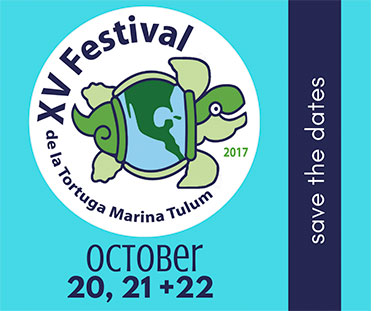|
View in your browser
|
 |
|
|
|
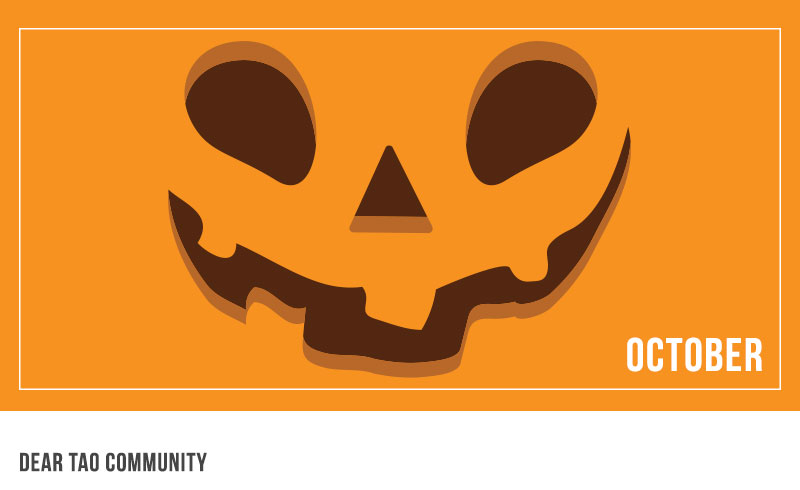
|
| |
October is here, Autumn arrived and a lot of fun with it, as the high season begins in Riviera Maya. We have some important festivals taking place this month, the Sea Turtle Festival in Akumal, promoting awareness and protection for this species, the International Mayan Culture Festival in Mérida and the incredible Life and Death Festival at Xcaret by the end of the month welcoming November’s Día de Muertos. We also have first class music performing in the Riviera, as Santana, Don Henley and an incredible lineup will gather at the Hard Rock Hotel.
Don’t forget to take care of yourself, meditate, practice mindfulness to create awareness and develop self-knowledge. Visit the beautiful natural setting of the ruins of Cobá and enjoy exploring around in a bicycle or take a walk around this astonishing site!
Finally we encourage you to try one of the symbols of this fantastic country: the taco. Tacos, in all the kinds, are an art to eat and a pleasure to enjoy. Add some salsa, maybe even some guacamole and buen provecho!
“In today’s rush we all think too much – seek too much – want too much – and forget about the joy of just being.”
~ Eckhart Tolle
Saludos,
|
|
|
 |
|
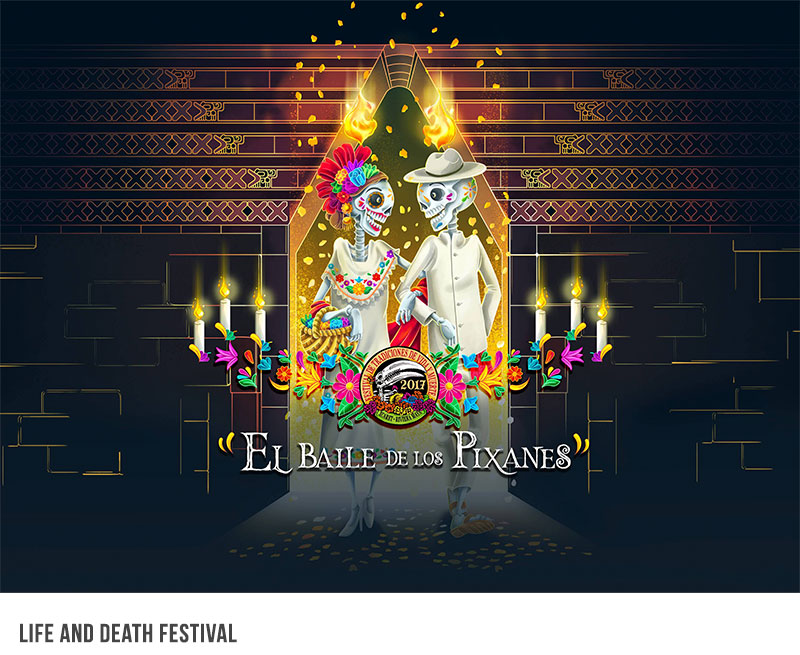 |
| |
From October 30th to November 2nd, the 12th edition of the Festival of Life and Death Traditions takes place in Xcaret to commemorate the Day of the Death. The state of Yucatán is the guest of honor in this edition and it gathers together all the traditions and rituals of the Yucatán Peninsula, to display the folklore of the ancient paying homage to the dead. In addition, there will be concerts, dances, expositions, offerings, theater, interactive workshops, parades, a Catholic mass, and plenty more activities will treat you to authentic experiences of the Day of the Dead, a Mexican holiday named Intangible Cultural Heritage of Humanity.
|
|
More than 40 altars plus three interactive workshops, and painting, drawing and photographic exhibitions will also be taking place in Xcaret. The Festival’s official secondary venues for the Festival will be Planetario Sayab (Planetary) and Teatro de la Ciudad de Playa del Carmen (City Theater) and as the main event the Mexican singer and songwriter Aleks Syntek will get you to dance with the hits that made him one of the most important celebrities in Mexico.
|
|
|
|
|
|
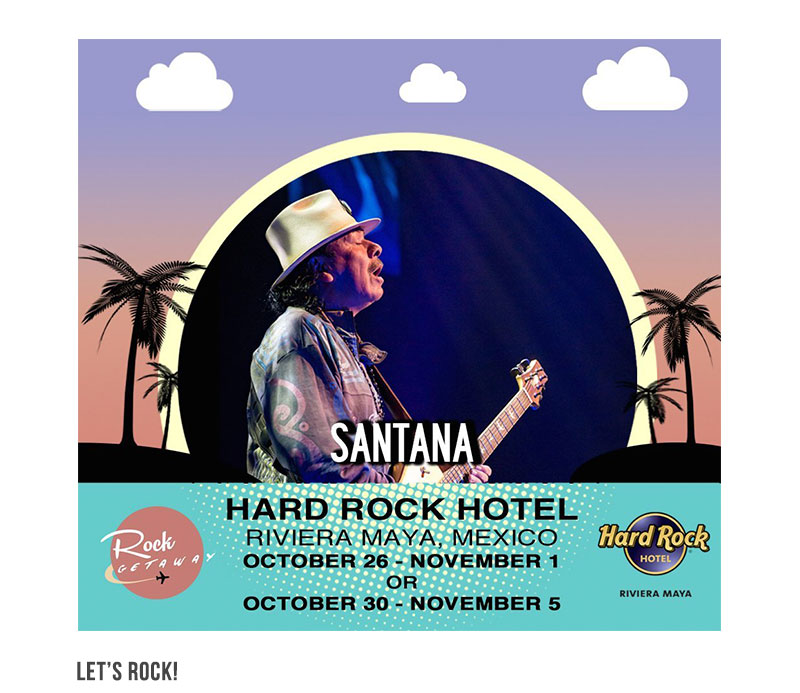 |
| |
In late October, the Hard Rock Hotel in Riviera Maya will be featuring the Rock Getaway Festival, with music provided by such legends as Don Henley, Roger Daltrey, The Steve Miller Band and Bad Company, Blue Oyster Cult, REO Speedwagon, Pat Benatar & Neil Giraldo, Queensryche, Los Lobos and mexican-american guitarist Carlos Santana, composer, singer and band-leader who helped to shape the concept of "world music" by his experiments with blending many styles of music from a multitude of ethnic sources. He has sold more than 90 million records, and performed to over 100 million people globally.

|
|
|
|
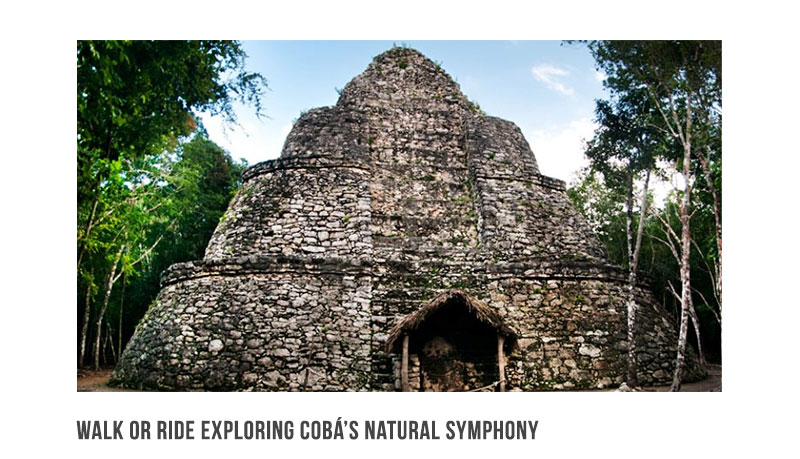 |
| |
You can walk, hire a bici taxi or rent a byclicle to explore the wonderful Mayan ruins of Cobá. The quiet and peaceful grounds of Coba’s claim to fame is the largest network of stone causeways in the ancient Mayan world, called sacbes (white roads). Over 50 of these roads have been discovered at the site, with 16 of them open to the public. This vast Mayan archaeological site dates from 600-900 A.D. and there were an estimated 100,000 people living in its domain. It was the heart of a large metropolis composed of many cities within the eastern Yucatan.
The raised stone pathways connect clusters of residential areas to the main pyramid area of Nohoch Mul and small lakes used as a water supply nearby. The largest pyramid at Coba is called Ixmoja, part of the Nohoch Mul group of buildings. The pyramid is 42 meters (138 feet) tall and was the heart of the city. Unlike other Maya sites, you can still climb this one; going up the 120 stairs to the top of this pyramid is well worth the effort. Standing here one can see over the jungle canopy for miles, unexcavated temple mounds peeking above the trees; from the top the jungle looks like a living green carpet. You can feel a light breeze cooling you off from the summit while gazing at the lush jungle landscape stretching out long in all directions.
On an early morning walk through these extensive ruins in the jungle, you could spot numerous species of birds, butterflies and animals, even the occasional spider monkey. Large ceiba trees intertwine with ancient stonework. The sounds of the jungle create an entertaining symphony. The beautiful natural setting of Cobá is a pleasure to explore.
There are several vendors offering tours and guided visits to Cobá, here are some useful.
Click for more information:
|
|
|
|
|
|
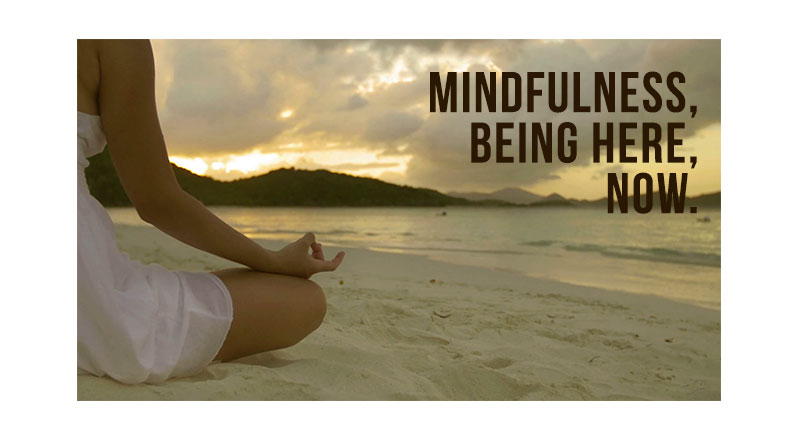 |
| |
Mindfulness is the psychological process of bringing one's attention to experiences occurring in the present moment, which can be developed through the practice of meditation and other training. In Buddhist teachings, mindfulness is used to develop self-knowledge and wisdom that gradually lead to what is described as enlightenment or the complete freedom from suffering. It is a state of active, open attention on the present. When you're mindful, you carefully observe your thoughts and feelings without judging them good or bad. Instead of letting your life pass you by, mindfulness means living in the moment and awakening to your current experience, rather than dwelling on the past or anticipating the future. Practicing mindfulness can help you cope with everyday life and deal with tough times. Here are some different strategies you can use to build mindfulness, plus tips on what to do if you’re finding it hard.
You don’t need a guru to be mindful – in fact, you can develop mindfulness during regular activities like walking, driving or even doing something as basic as brushing your teeth. You can start by focusing only on the present moment. What is happening for you right now? Is your breathing fast or slow? Are you tired? Are you hungry? How do you feel? Try to concentrate on what’s happening around you. Do you feel hot or cold? What does the air feel like on your face? What sounds can you hear? Try not to be judgmental about anything you notice. Don’t label things as ‘good’ or ‘bad’. Just notice them and let them be.
|
|
|
|
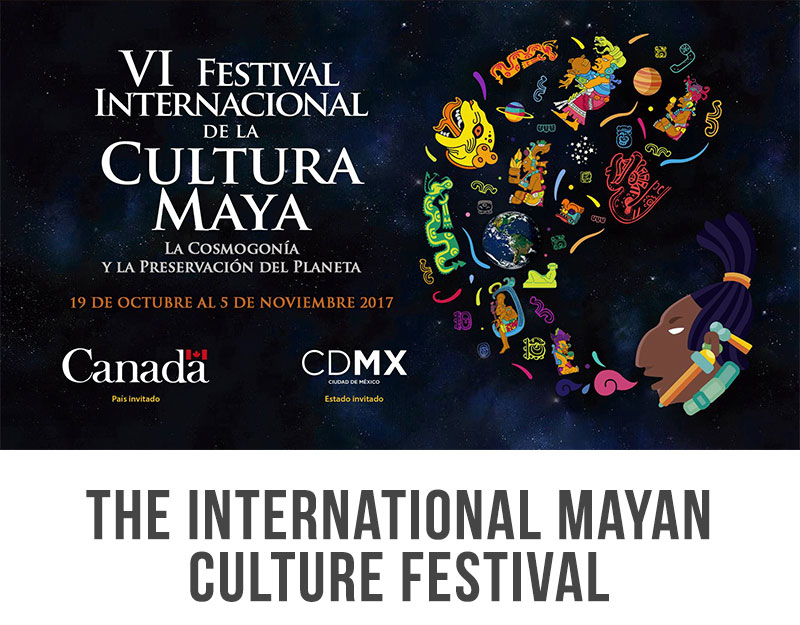 |
| |
This Festival began its activities and its presence in the field of culture, tourism, and economy in the world, the 21st of December of 2012, a year in which a cycle ended and a new one began in the Cosmogony, in Astronomy, in Mathematics, and in the Mayan solar cycle. This year, Yucatan will once again host the FICMAYA, the largest academic, scientific, intellectual, artistic and aesthetic meeting since its beginnings. This year’s guest country will be Canada, with Mexico City as the national guest. Program highlights include the roundtable "Cosmogony and Mythology among the Maya" and the global conference "Ancient Cultures' Cosmogony and Mythology for the Preservation of the Planet," which take place October 24th – 26ths.
For more information, videos and event schedules, visit:

|
|
|
|
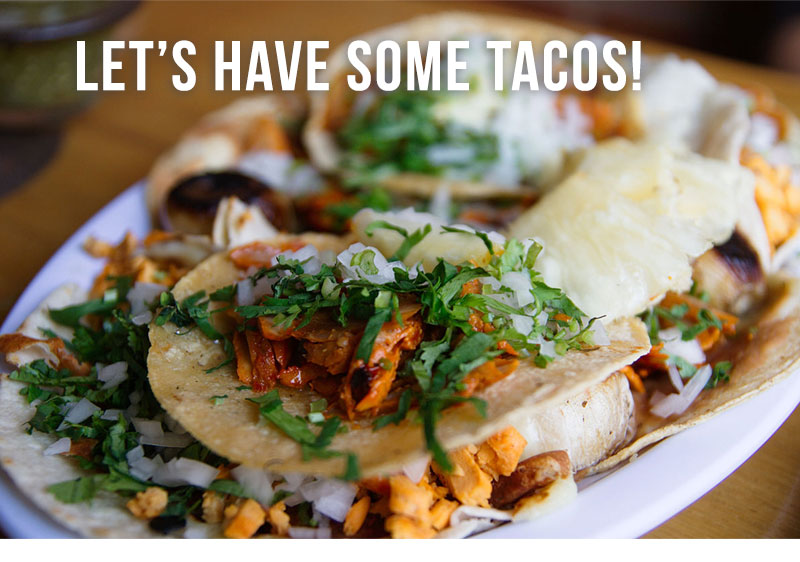 |
| |
Mexican cuisine features endless styles, flavors and colors; it is so extensive and multifaceted that it has been named part of the “World Heritage of Humanity” by UNESCO. One dish that has become a symbol of the country is the taco.
The true origin of the taco is unknown but it is believed to have been created in Pre-Hispanic Mexico. We have two references from this epic. The first is Moctezuma, who used tortillas made on hot stones as spoons, forming something that resembles the taco we know today; the second is the way that food was sent to the men who worked in the fields all day, wrapped in tortillas. The word taco might come from the náhuatl ‘tlahco’ which means “half or in the middle”, referring to the shape of the taco.
The first taquiza, a big taco feast, ever documented was offered by Hernán Cortés during the time of the Spanish conquest, This, according to Bernal Diaz del Castillo in his chronicle, “True Story of the Conquering of the New Spain”, which says that Cortés’ captains were served pork with tortillas.
In 1908, the tacos acorazados were born. It is believed that it was during the Mexican Revolution that this kind of tacos, with double tortilla, begin to be prepared. These acorazdo tacos were first known in Cuautla and soon were very popular in Cuernavaca.
In the 1960’s tacos al pastor were introduced by El Tizoncito, a Mexico’s City taquería and they became the most well-known Mexican street food, a very simple combination of roasted pork and grilled tortilla. A nighttime favorite for locals. The pork is always slow cooked and shaved off into the tortilla. The taquero (taco server) tops the taco with a little slice of pineapple in the most peculiar way.
There are a lot of other kind of tacos, including tacos de canasta (in a basket), tacos sudados (“sweat tacos”), tacos de guisado (stews tacos), tacos dorados (fried tacos), tacos de bisteck (beef steak tacos), fish taco, shrimp taco, and a huge variety that makes the taco a favorite of everybody around the world! A must! Eating tacos is an art; Any day, any time of the day is good for a good taco, and as the famous Mexican saying establishes, “you never deny anyone a taco”.
One of the best rated taco place in Riviera Maya, is "El Fogón" in Playa del Carmen, check it out and enjoy some real mexican tacos! Avenida Constituyentes, Quintas del Carmen, 77720 Playa del Carmen.
|
|
|
|
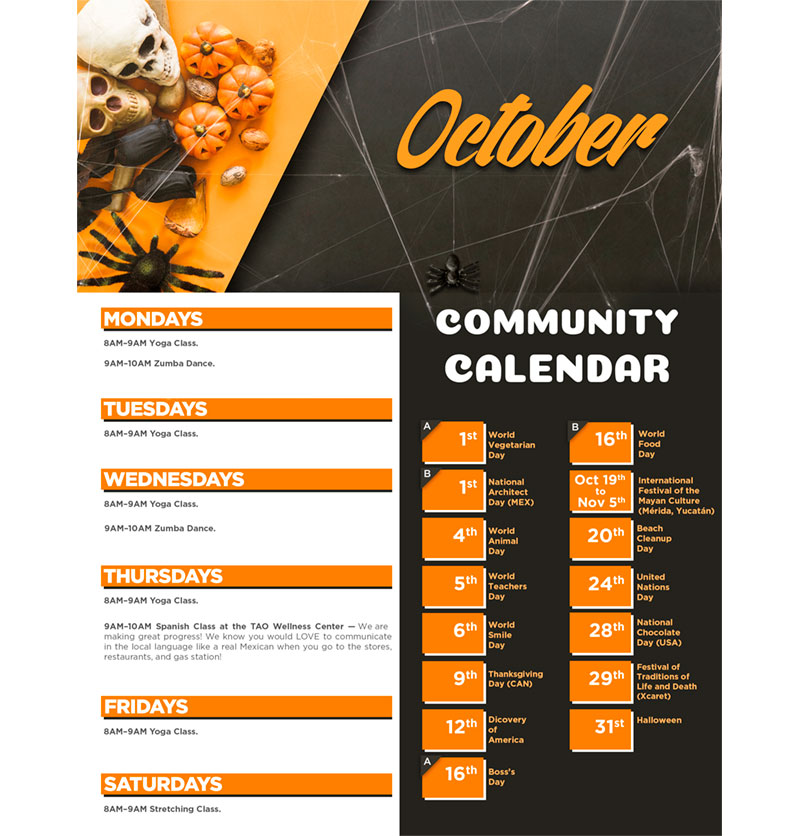 |
|
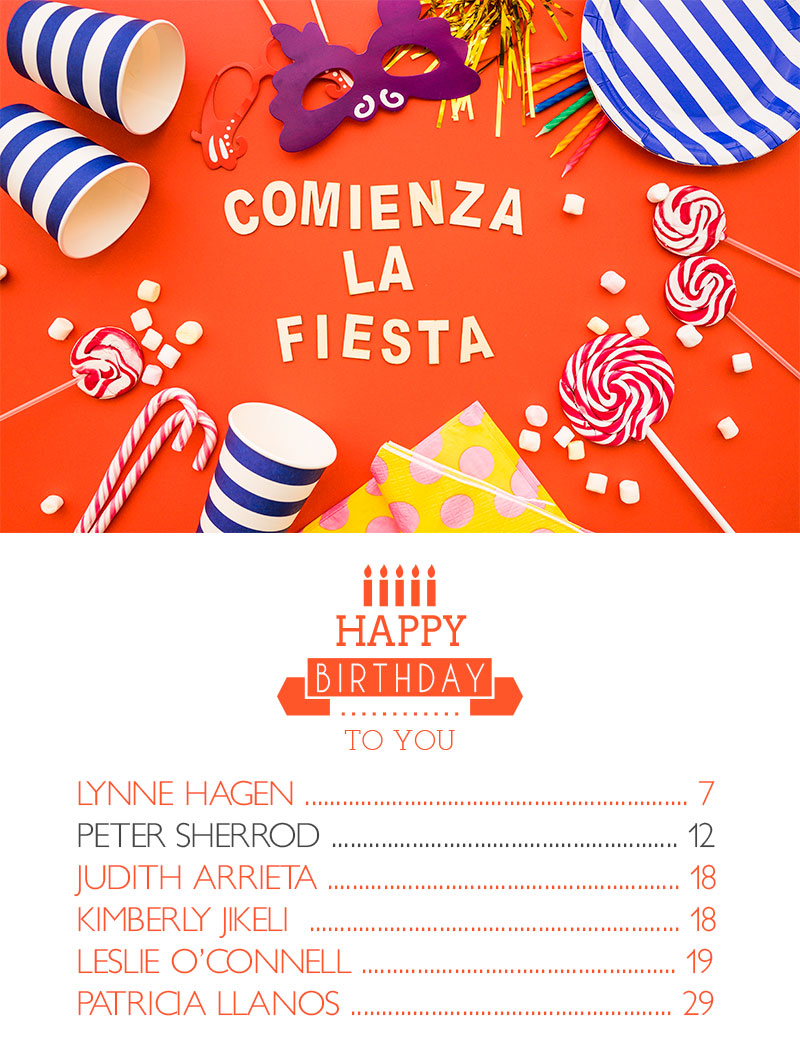 |
|
 |
|
Paulina Almeida
VP of Sales
palmeida@taomexico.com
Malú Farell
Marketing Manager
mfarell@taomexico.com
Polo Esponda
Deliveries Manager
deliveriesmanager@taomexico.com
|
|
|
 |
|
|
 |
























 Tulum is gearing up, this October 20th, 21st and 22nd, for the XV Sea Turtle festival to promote awareness and preservation of the sea turtles that visit the beaches of the Riviera Maya every year. The event encourages ecological consciousness and care of these majestic creatures; its philosophy is based on respect for the animals, as they are a beautiful species that chooses to spend its vital nesting period in the region. The festival’s venues are unique and varied: Turtle Sanctuary, Playa Pescadores, Xcacel, Akumal and Tulum National Park.
Tulum is gearing up, this October 20th, 21st and 22nd, for the XV Sea Turtle festival to promote awareness and preservation of the sea turtles that visit the beaches of the Riviera Maya every year. The event encourages ecological consciousness and care of these majestic creatures; its philosophy is based on respect for the animals, as they are a beautiful species that chooses to spend its vital nesting period in the region. The festival’s venues are unique and varied: Turtle Sanctuary, Playa Pescadores, Xcacel, Akumal and Tulum National Park.
